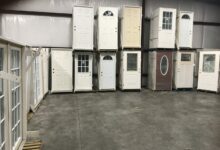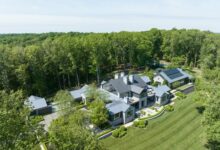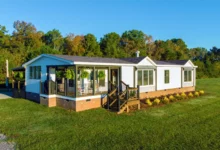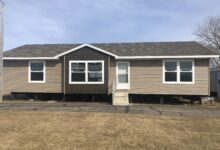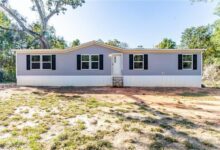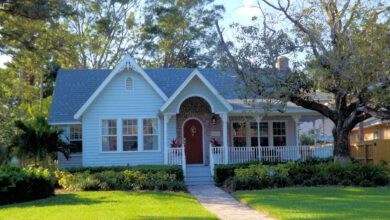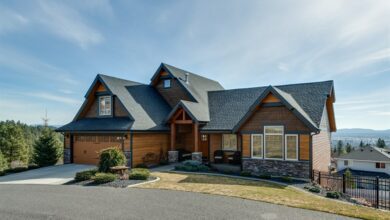Prefab Homes for Sale in Illinois: The Rise of Prefab Homes in Illinois
Prefab Homes for Sale Illinois – Welcome to our comprehensive guide on prefab homes for sale in Illinois. In this article, we will explore the world of prefabricated homes and how they have revolutionized the real estate market in the state. Whether you are a first-time homebuyer or looking to downsize, prefab homes offer a unique combination of affordability, sustainability, and customization options. Join us as we delve into the details of prefab homes in Illinois and help you make an informed decision for your next home purchase.
The Rise of Prefab Homes in Illinois
In recent years, prefab homes have been on the rise in Illinois, and for good reason. With the increasing demand for affordable housing and the desire for environmentally friendly living options, prefab homes have become a popular choice for many homebuyers. The convenience and cost-effectiveness of prefab construction methods have made it possible for more people to achieve their dream of owning a home.
The Advantages of Prefab Homes
One of the main advantages of prefab homes is their affordability. Compared to traditional stick-built homes, prefab homes are often more cost-effective due to their streamlined construction process and the ability to mass-produce certain components. This cost savings can make a significant difference for homebuyers, especially those on a tight budget or looking to maximize their investment.
Another advantage of prefab homes is their sustainability. Many prefab homes are built with energy-efficient materials and incorporate green technologies, such as solar panels and rainwater harvesting systems. By reducing energy consumption and minimizing environmental impact, prefab homes allow homeowners to live more sustainably while saving on utility bills.
Changing Perceptions and Increased Customization
Prefab homes have come a long way in terms of design and aesthetics. In the past, they were often associated with cookie-cutter designs and limited customization options. However, today’s prefab homes offer a wide range of architectural styles and customization choices. Homebuyers can choose from various floor plans, exterior finishes, and interior features to create a home that reflects their unique taste and lifestyle.
Furthermore, the perception of prefab homes has shifted in recent years. They are now seen as a viable and attractive option for those seeking quality, efficiency, and affordability. As more people recognize the benefits of prefab homes, the demand continues to grow, leading to an increase in the availability of prefab homes for sale in Illinois.
Understanding Prefab Homes: What Sets Them Apart?
Modular Homes: Versatility and Efficiency
Modular homes are one type of prefab home that has gained popularity in Illinois. These homes are built in modules or sections in a factory, then transported to the site and assembled. One of the significant advantages of modular homes is their versatility. They can be easily customized to suit different architectural styles and can range from small cottages to spacious family homes.
The construction process of modular homes is highly efficient. The factory setting allows for precise and controlled construction, minimizing the risk of weather-related delays. Additionally, the use of standardized modules ensures consistent quality and reduces construction waste.
Panelized Homes: Speed and Cost Savings
Panelized homes are another type of prefab home that offers advantages in terms of speed and cost savings. These homes are built using pre-made wall panels, roof trusses, and floor systems, which are then transported to the site for assembly. The panelized construction process allows for faster on-site assembly since most of the components are already manufactured.
By reducing construction time, panelized homes can help homeowners move into their new homes sooner. This can be particularly beneficial for those who need to relocate quickly or have time-sensitive housing needs. Additionally, the streamlined construction process can result in cost savings due to reduced labor and material expenses.
Manufactured Homes: Affordability and Quality
Manufactured homes, also known as mobile homes, are another type of prefab home that offers affordability and quality. These homes are built entirely in a factory and transported to the site, where they are installed on a permanent foundation. Manufactured homes are subject to federal building standards, ensuring a certain level of quality and safety.
One of the advantages of manufactured homes is their affordability. Due to their efficient construction methods and economies of scale, manufactured homes often come at a lower price point compared to traditional stick-built homes. This affordability makes them an attractive option for first-time homebuyers or those on a limited budget.
The Benefits of Prefab Homes: Affordability and Sustainability
Affordability: Cost Savings and Predictable Budgeting
Prefab homes, in general, offer significant cost savings compared to traditional stick-built homes. The controlled factory environment allows for efficient use of materials and reduces waste. Additionally, the ability to mass-produce certain components lowers the overall construction cost. These cost savings are then passed on to the homebuyers, making prefab homes a more affordable option.
Furthermore, the streamlined construction process of prefab homes typically results in shorter construction time. This can translate into savings in terms of labor and financing costs. With faster construction and predictable timelines, homebuyers can plan their budgets more accurately and avoid unexpected expenses that may arise during traditional construction.
Sustainability: Energy Efficiency and Environmental Impact
Prefab homes are designed with sustainability in mind. Many manufacturers use energy-efficient materials and employ green building practices to reduce the environmental impact of the construction process. Additionally, prefab homes are often well-insulated, which helps to minimize energy consumption for heating and cooling.
Moreover, prefab homes can incorporate various sustainable technologies, such as solar panels, energy-efficient appliances, and rainwater harvesting systems. These features not only reduce the homeowner’s carbon footprint but also contribute to long-term cost savings by lowering utility bills.
Customization Options: Designing Your Dream Home
Architectural Styles: From Traditional to Contemporary
When it comes to prefab homes in Illinois, there is a wide range of architectural styles to choose from. Whether you prefer a traditional farmhouse, a sleek modern design, or something in between, there is a prefab home out there to suit your taste. Many manufacturers offer catalogs of pre-designed homes, each with its own unique style and features.
Additionally, customization options allow you to tailor the design to your specific needs and preferences. You can modify the floor plan, select exterior finishes, and choose interior features to create a home that reflects your personal style. Some manufacturers even offer the option to work with architects to create a fully custom design, ensuring your prefab home is truly one-of-a-kind.
Interior Finishes and Features
Customization doesn’t stop at the exterior. Inside your prefab home, you have the opportunity to choose from a variety of interior finishes and features. From flooring options to cabinetry styles, you can select the materials and finishes that align with your vision for your dream home.
Moreover, modern prefab homes often come with a range of optional features and upgrades. These can include energy-efficient appliances, smart home technology, and even built-in storage solutions. By incorporating these features into your prefab home, you can enhance its functionality and convenience, making it truly tailored to your needs.
The Prefab Construction Process: From Factory to Foundation
Design and Engineering
The construction of a prefab home begins with the design and engineering phase. This is where you work with the manufacturer to create a customized floor plan and select the desired features and finishes. The manufacturer’s design team will ensure that the design meets all necessary building codes and regulations.
During the engineering phase, the manufacturer will create detailed plans and specifications for the construction of your prefab home. This includes structural calculations, electrical layouts, and plumbing designs. These plans serve as the blueprint for the factory construction process.
Factory Construction
Once the design and engineering are complete, the actual construction of the prefab home takes place in a controlled factory environment. The factory setting allows for efficient and precise construction, minimizing errors and delays caused by weather conditions or other external factors.
The construction process varies depending on the type of prefab home. For modular homes, the factory will produce individual modules or sections that make up the final home. These modules are built on assembly lines, with each team specializing in a specific aspect of the construction process, such as framing, electrical, or plumbing.
Similarly, panelized homes are constructed using pre-made wall panels, roof trusses, and floor systems. These components are manufactured in the factory and then transported to the site for assembly. The panels are carefully labeled to ensure proper placement during on-site construction.
Manufactured homes are built entirely within the factory, including the installation of interior finishes and fixtures. The completed home is then transported to the site and installed on a permanent foundation.
On-Site Assembly and Finishing
Once the prefab components are transported to the site, on-site assembly and finishing take place. For modular and panelized homes, this involves carefully aligning and connecting the various modules or panels to create the final structure. The on-site construction team ensures that everything fits together seamlessly and makes any necessary adjustments.
During the finishing phaseof on-site assembly, interior finishes are installed, such as flooring, cabinetry, and fixtures. Exterior finishes, such as siding and roofing, are also completed. This stage involves attention to detail and precision to ensure that the final product meets the design specifications and quality standards set by the manufacturer.
Inspections and Final Touches
Once the on-site assembly and finishing are complete, the prefab home undergoes a series of inspections to ensure compliance with building codes and regulations. These inspections cover various aspects, including structural integrity, electrical systems, plumbing, and overall safety.
After passing the inspections, the final touches are added to the prefab home. This includes cleaning the interior and exterior, installing any remaining fixtures or appliances, and conducting a final quality check. The home is then ready for occupancy and enjoyment.
Financing Options for Prefab Homes in Illinois
Traditional Mortgage Loans
One common financing option for prefab homes in Illinois is to secure a traditional mortgage loan. Many lenders offer mortgage loans specifically tailored to prefab homes. These loans require a down payment and come with fixed or adjustable interest rates, depending on the borrower’s preference and financial situation.
When applying for a mortgage loan, it is essential to have a good credit score and a stable income. Lenders will also consider the appraised value of the prefab home and the borrower’s debt-to-income ratio. Working with a knowledgeable mortgage lender who specializes in prefab homes can help streamline the financing process and ensure you secure the best terms.
Construction Loans
If you are building a custom prefab home or purchasing a prefab home that is still under construction, a construction loan may be a suitable financing option. Construction loans provide funds to cover the costs of building the home, including materials, labor, and permits. These loans typically have a short-term duration, and interest is charged only on the funds disbursed during the construction phase.
Once the construction is complete, the construction loan can be converted into a traditional mortgage loan, or the borrower can secure a separate mortgage loan to pay off the construction loan. It’s important to note that construction loans often require a larger down payment and have stricter qualification requirements compared to traditional mortgage loans.
Manufacturer Financing
In some cases, prefab home manufacturers offer financing options directly to their customers. This can be beneficial for buyers who may have difficulty obtaining traditional financing due to credit or income requirements. Manufacturer financing typically involves a down payment and fixed interest rates.
Before opting for manufacturer financing, it’s important to carefully review the terms and conditions, including any potential fees and interest rates. Comparing manufacturer financing options with other financing alternatives can help determine the most cost-effective and suitable choice for your specific circumstances.
Popular Prefab Home Designs in Illinois: Traditional to Modern
Farmhouse Charm
Farmhouse-style prefab homes have been gaining popularity in Illinois, as they evoke a sense of warmth, simplicity, and nostalgia. These homes often feature pitched roofs, front porches, and traditional exterior finishes such as wood siding or brick. Inside, open floor plans and rustic accents create a cozy and inviting atmosphere.
Sleek and Modern
For those seeking a more contemporary aesthetic, modern prefab homes are an excellent choice. These homes typically feature clean lines, flat or low-pitched roofs, and large windows that maximize natural light. The interiors often embrace an open concept layout with minimalist design elements, creating a sense of spaciousness and sophistication.
Craftsman Elegance
Craftsman-style prefab homes offer a blend of classic and modern design elements. These homes often showcase detailed craftsmanship, with prominent front porches, tapered columns, and intricate woodwork. Inside, you’ll find open floor plans, high ceilings, and an emphasis on natural materials such as wood and stone.
Contemporary Cottage
Contemporary cottage-style prefab homes combine the charm of a traditional cottage with modern design elements. These homes often feature a mix of exterior finishes, such as clapboard siding and stone accents. Inside, the focus is on creating a cozy and comfortable living space with efficient layouts and stylish finishes.
Customization Options
One of the advantages of prefab homes is the ability to customize the design to suit your preferences. Whether you prefer a specific architectural style or have unique requirements for your living space, many prefab home manufacturers offer a range of customization options. From selecting exterior finishes and floor plans to choosing interior fixtures and finishes, you can create a home that reflects your personal style and meets your specific needs.
Finding the Right Prefab Home Builder in Illinois
Researching and Gathering Information
When searching for a prefab home builder in Illinois, it’s essential to conduct thorough research and gather information about different builders and their offerings. Start by exploring their websites, looking for information about their experience, portfolio, and customer reviews. Reading testimonials and reviews from previous clients can provide valuable insights into the builder’s reputation and the quality of their work.
Checking Credentials and Certifications
Before making a final decision, check the credentials and certifications of the prefab home builders you are considering. Ensure they are licensed, insured, and bonded. Look for certifications or affiliations with reputable industry organizations, as this can be an indication of their commitment to quality and professionalism.
Reviewing Portfolio and Model Homes
Reviewing the portfolio and visiting model homes can give you a better sense of the builder’s craftsmanship and design capabilities. Take the time to visit model homes, if available, to see the quality of the finishes and get a feel for the overall construction. Pay attention to the attention to detail and the level of customization options offered by the builder.
Seeking Recommendations and References
Seeking recommendations and references from friends, family, or real estate professionals can also be valuable when choosing a prefab home builder in Illinois. If someone you trust has had a positive experience with a particular builder, it can give you confidence in their abilities and reliability.
Communication and Collaboration
Effective communication and collaboration are essential when working with a prefab home builder. Ensure that the builder is responsive to your inquiries and is willing to listen to your ideas and concerns. A good builder will work closely with you throughout the process, keeping you informed and involved at every stage.
The Pros and Cons of Prefab Homes
Pros of Prefab Homes
– Affordability: Prefab homes are often more cost-effective compared to traditional stick-built homes, thanks to streamlined construction methods and economies of scale.
– Sustainability: Many prefab homes are built with eco-friendly materials and incorporate energy-efficient features, reducing their environmental impact and utility costs.
– Customization: Prefab homes offer a wide range of customization options, allowing homeowners to create a personalized living space that suits their needs and preferences.
– Time Efficiency: The controlled factory environment and standardized construction methods of prefab homes result in shorter construction times compared to traditional homes.
– Quality Control: Prefab homes undergo rigorous quality control measures throughout the construction process, ensuring that they meet strict standards and regulations.
Cons of Prefab Homes
– Limited Location Choices: Prefab homes require suitable building sites, and finding available lots in desired locations may be more challenging compared to traditional homes.
– Land and Site Preparation: Depending on the chosen site, additional preparation work may be required before the prefab home can be installed, which can incur extra costs.
– Financing Considerations: Some lenders may have specific requirements or limitations when it comes to financing prefab homes, which could potentially limit financing options for buyers.
– Permits and Regulations: Prefab homes must comply with local building codes and regulations, which can vary from one area to another. Ensuring compliance may require additional time and effort.
– Limited Design Flexibility: While prefab homes offer a range of customization options, there may still be limitations compared to designing a custom stick-built home from scratch.
The Future of Prefab Homes: Trends and Innovations
Advanced Technology Integration
As technology continues to advance, prefab home construction is expected to incorporate more innovative techniques and materials. This includes the integration of smart home technologies, energy-efficient systems, and sustainable materials. These advancements will further enhance the functionality, comfort, and environmental performance of prefab homes.
Sustainability and Green Building
The growing focus on sustainability in the construction industry will also influence the future of prefab homes. Manufacturers will increasingly prioritize using eco-friendly materials and implementing sustainable building practices. This will result in homes that are even more energy-efficient, environmentally friendly, and cost-effective to operate.
Flexible and Modular Designs
Flexibility and adaptability will become key considerations in the design of prefab homes. Modular designs that allow for future expansions or modifications will become more prevalent. This will enable homeowners to easily adjust their living spaces as their needs change, without the need forextensive renovations or costly additions.
Off-Grid and Self-Sustainable Homes
With the increasing interest in off-grid living and self-sustainability, prefab homes will likely incorporate more features that allow homeowners to generate their own energy, collect rainwater, and manage waste effectively. These features will provide homeowners with greater independence and reduce their reliance on external resources.
Design Innovation and Customization
Prefab home manufacturers will continue to push the boundaries of design and offer more innovative and customizable options. This includes exploring alternative materials, experimenting with unique architectural styles, and embracing cutting-edge design technologies. The result will be prefab homes that are aesthetically stunning and tailored to the individual needs and preferences of homeowners.
Community Living and Multi-Unit Prefab Homes
Prefab homes will also play a role in addressing the growing demand for affordable housing and sustainable community development. Multi-unit prefab homes, such as townhouses or apartment complexes, will become more prevalent, offering an efficient and cost-effective solution for urban living. These developments will promote a sense of community and provide more housing options for a diverse range of residents.
As the demand for prefab homes continues to grow, the industry will continue to innovate and evolve. With advancements in technology, design, and sustainability, prefab homes will offer even more possibilities for homeowners in Illinois and beyond.
In conclusion, prefab homes in Illinois provide an affordable, sustainable, and customizable option for those looking to own a home. The rise of prefab homes in the state can be attributed to their numerous benefits, such as cost savings, energy efficiency, and design flexibility. From modular homes to panelized and manufactured homes, there are various types of prefab homes to suit different preferences and budgets.
When considering prefab homes, it’s important to research and choose a reputable builder who offers quality craftsmanship, customization options, and excellent customer service. Understanding the financing options available, such as traditional mortgage loans or construction loans, can also help make the home buying process smoother.
As the future of prefab homes unfolds, we can expect to see advancements in technology, sustainability, and design innovation. From off-grid and self-sustainable homes to flexible and modular designs, the possibilities for prefab homes are expanding. Whether you’re looking for a farmhouse-style retreat or a sleek modern residence, prefab homes offer a wide range of architectural styles to choose from.
With their affordability, sustainability, and customization options, prefab homes are transforming the real estate market in Illinois. By considering the information provided in this comprehensive guide, you can confidently explore prefab homes for sale in Illinois and find the perfect home that fits your lifestyle and budget.
